Summer is upon us, and the weather is right for sandals.
Unfortunately, stripping off foot coverings means three things:
- Your foot blemishes, not least of all heal calluses, take center stage.
- Dry, crusty feet
- New calluses.
This guide is all about helping you eliminate pesky, painful calluses, and restore your beautiful feet.
What Are Foot Calluses?
Corns and calluses appear in areas of high pressure or friction. They are your skin’s way of adapting to the stress and preventing blisters or wounds.
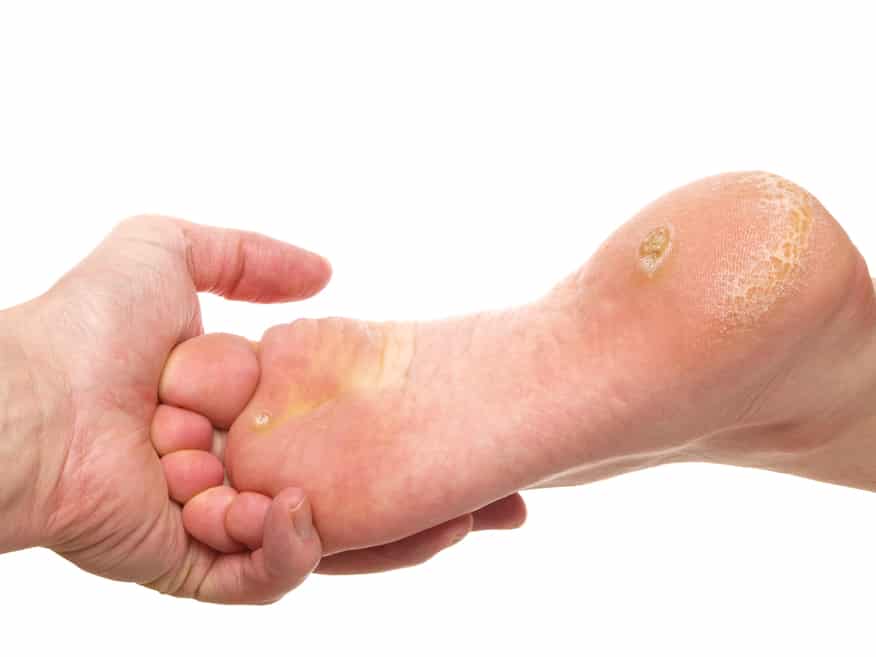
Corns are small patches of hard skin surrounded by inflammation. They’re painful and can turn into wounds. Corns usually form in areas of friction (e.g., the sides of your toes.)
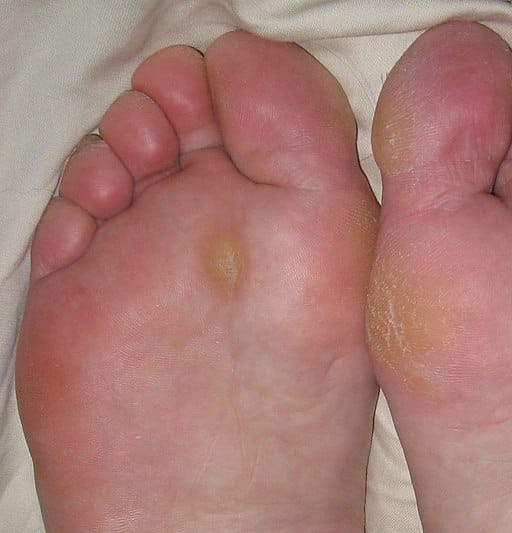
Calluses are larger than corns, and they’re not painful. They appear in weight-bearing areas like the soles of your feet.
While corns and calluses are unsightly, they’re not a dermatological problem for healthy people. They disappear for good once you remove the source of foot friction. 1D. Singh, G. Bentley, and S. G. Trevino. <a href=”https://www.ncbi.nlm.nih.gov/pmc/articles/PMC2351151/” target=”_blank”>Callosities, corns, and calluses.,</a> British Journal of Sports Medicine. 1996
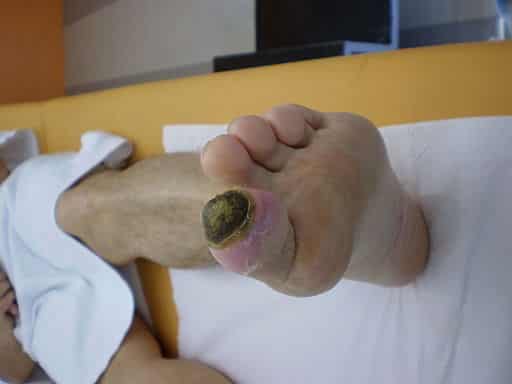
If you have diabetes, though, calluses can appear because of poor foot circulation. Since people with diabetes can develop hard-to-heal ulcers, don’t cut off the callus yourself. Instead, talk to your healthcare provider about controlling your blood sugar and foot care tips.
How Do You Get Foot Calluses?
Your skin is a protective barrier against bacteria, viruses, and fungi.
But, if an area of the skin receives more mechanical stress, it is more likely to become injured. This is why weight-bearing places like your heels have thicker skin and why they can form calluses.
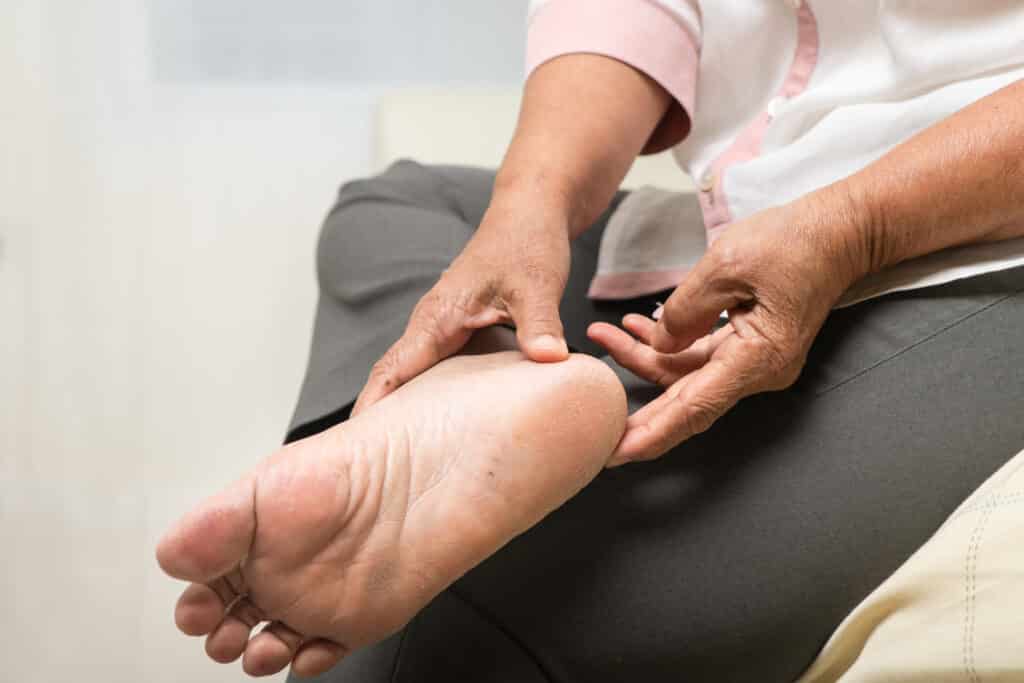
But any source of pressure or friction can cause calluses.2Denise B Freeman. Corns and calluses resulting from mechanical hyperkeratosis, Am Fam Physician. 2002
Foot calluses can appear because of:
- Wearing uncomfortable footwear, which presses on certain spots (e.g., tight straps biting into the sides of your toes)
- Walking barefoot on hard surfaces or spending long hours standing up.
- Wearing shoes without socks, socks that aren’t soft enough, or short socks that slip under your foot while walking.
- Improper walking posture (e.g., putting too much pressure on the outer part of your foot when you walk.)
Some foot deformities make it more likely to get foot calluses. For instance, bony bumps on your big toe (bunions) can press against tight-fitting shoes, causing a callus to appear.
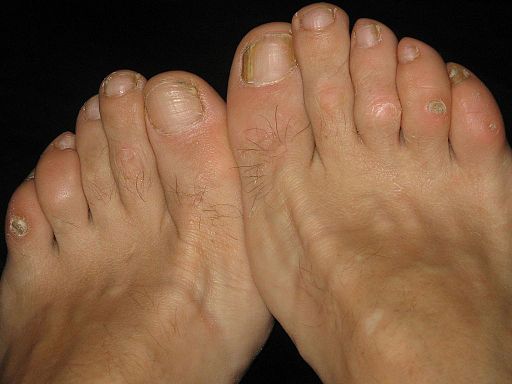
Some callus formation is normal, especially in bony or prominent areas of your feet like the heel. But, if a callus cracks or makes it uncomfortable to stand or walk, it’s time to treat it.
How To Permanently Remove Foot Calluses
Several tools and products promise to banish your stubborn calluses. Here’s how they stack up:
Callus Remover Tools
These tools remove the dead skin by buffing it away. They are physical exfoliants, and using them doesn’t expose your skin to potentially irritating chemicals. The downside is tools can wind up hurting healthy skin if you’re enthusiastic using them.
Electric Callus Remover
Callus removers use a mineral roller powered by a high-speed motor. The stone itself isn’t as abrasive as a grater, but the fast rotation makes it effective at removing calluses. Callus removers like the Own Harmony model also slow down if you press on the skin, preventing you from injuring healthy skin.
Foot Grater
Grater tools yield impressive results, but they’re also the riskiest option. Opening small nicks and cracks in your skin is virtually inevitable. These injuries are an entry point for bacteria and other pathogens, which can infect your skin and even pass into your bloodstream. Most states ban foot graters in salons because they can cause potentially life-threatening infections.
Hand-Held Foot Files
Foot files are gentle with your skin, but they take longer than an electric tool. Be very patient when using them – rubbing too hard will only wind up injuring your skin.
Urea Products
Urea is an intensive moisturizer that softens hard skin and reduces callus buildup. Urea-containing products are a high maintenance option, especially if you walk or stand for long periods. Try this 40% urea cream with impressive callus-removing powers.
Soaking Calluses
Warm water softens your skin, making calluses easier to remove. Pre-soak your feet before using a callus remover for faster and better results. To supercharge your foot soak, add an acidic ingredient like vinegar, or some Epsom salts.
Foot Masks
Exfoliating masks remove calluses effortlessly, and you can make them at home. Check out our article on the best DIY foot masks made with ingredients you can find in your kitchen. Or, opt for one of our favorite peels and masks for baby-soft skin.
How to Prevent Future Foot Calluses
The best way to get rid of calluses for good is to remove their cause. Keep your skin supple and reduce the pressure on weight-bearing spots to stop getting foot calluses altogether.3D. Singh, G. Bentley, and S. G. Trevino. Callosities, corns, and calluses.
, BMJ. 1996
Reduce Foot Friction
Corns and calluses are protective skin formations. Once the pressure or friction disappears, so does the thickened skin. To reduce mechanical stress on your foot skin:
- Wear properly fitted shoes. If you spend a lot of time standing or walking, invest in orthopedic footwear that gives you additional support.
- To give your toes enough room, avoid wearing pointed or strappy shoes for prolonged periods.
- Wear cushioned socks and slippers in the house and flip-flops on hard surfaces outside.
- Clip your toenails regularly (but avoid cutting in too deep, which can cause ingrown nails.)
Moisturize Regularly

Healthy, supple skin can absorb mechanical stress more easily without thickening. Choose a lotion or cream to use on your feet, especially if you tend to suffer from dry skin.
Use Padding
Cushions, insoles, or bandages can protect high-friction areas and prevent calluses.

This means you don’t have to banish your favorite pair of pumps altogether. Instead, add a soft insole to absorb some of the pressure.
How Quickly Can You Expect To See Results?
Once you reduce the friction and pressure, your skin will no longer need to adapt. It can take up to a few weeks for the calluses to disappear completely. Meanwhile, use a callus remover, moisturize, and do foot soaks every few days to keep the skin supple and healthy.
What Not To Do
These are the most common (and often dangerous) mistakes people make while attempting to remove a callus:
Don’t Use Sharp Objects
Sharp tools like foot graters don’t belong near your feet. While it can be tempting to “cut off” a large callus, you’re running the risk of severe infection.
Don’t Damage Your Healthy Skin
Calluses are areas of dead cells, but they lay over healthy skin. Be gentle and take your time when you buff them away. Rubbing too hard can open cracks and cuts in your feet, making it easy for pathogens to enter.
Sharing callus removers, foot files, or other tools increases the risk of infection. Keep your skin safe by only using proper tools and washing them after every use.
Removing Foot Calluses: Final Thoughts
Calluses and corns are unpleasant, but with the right cosmetic treatment, you can get rid of them quickly and permanently.
What is your favorite way of removing calluses? Let us know in the comments below!
